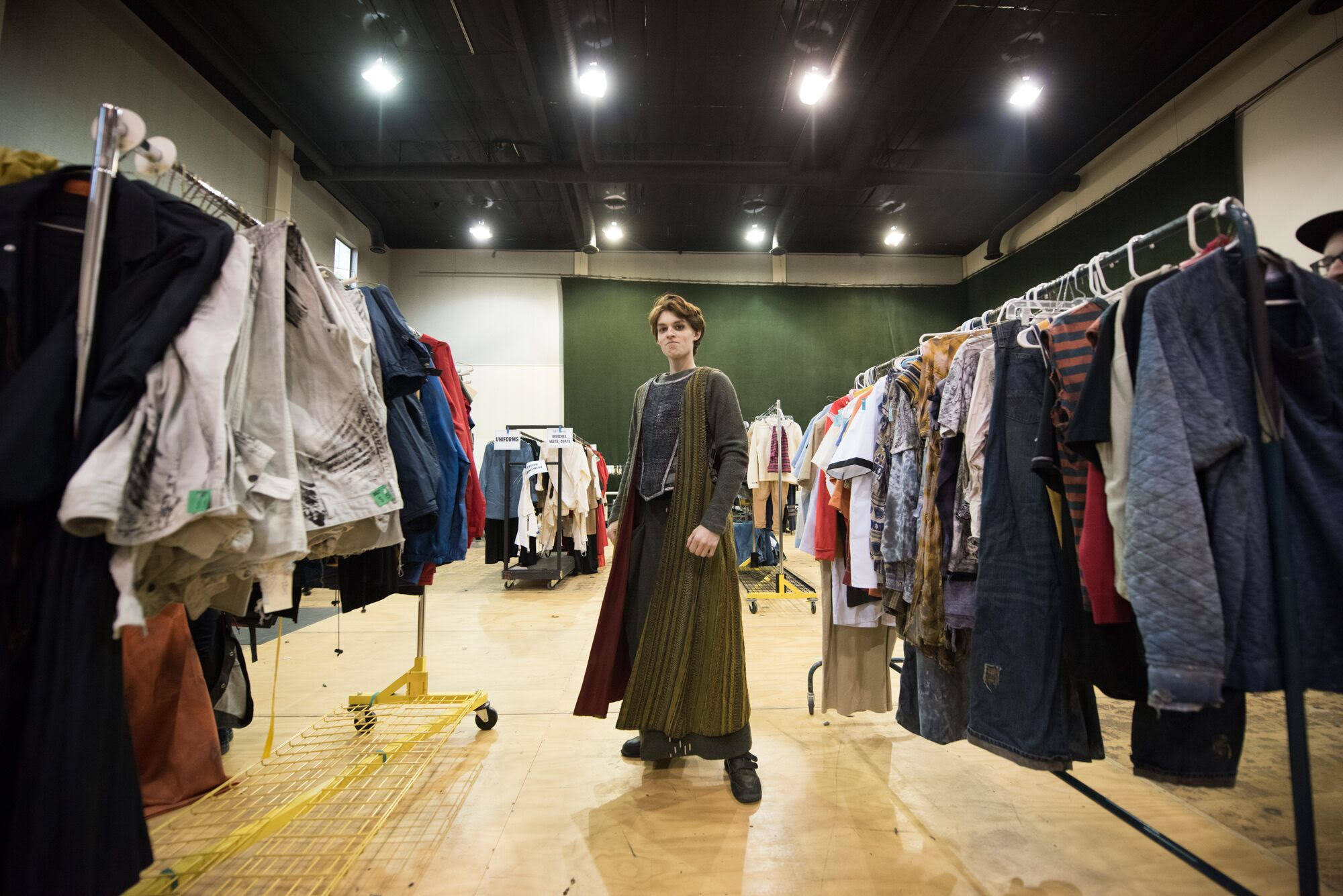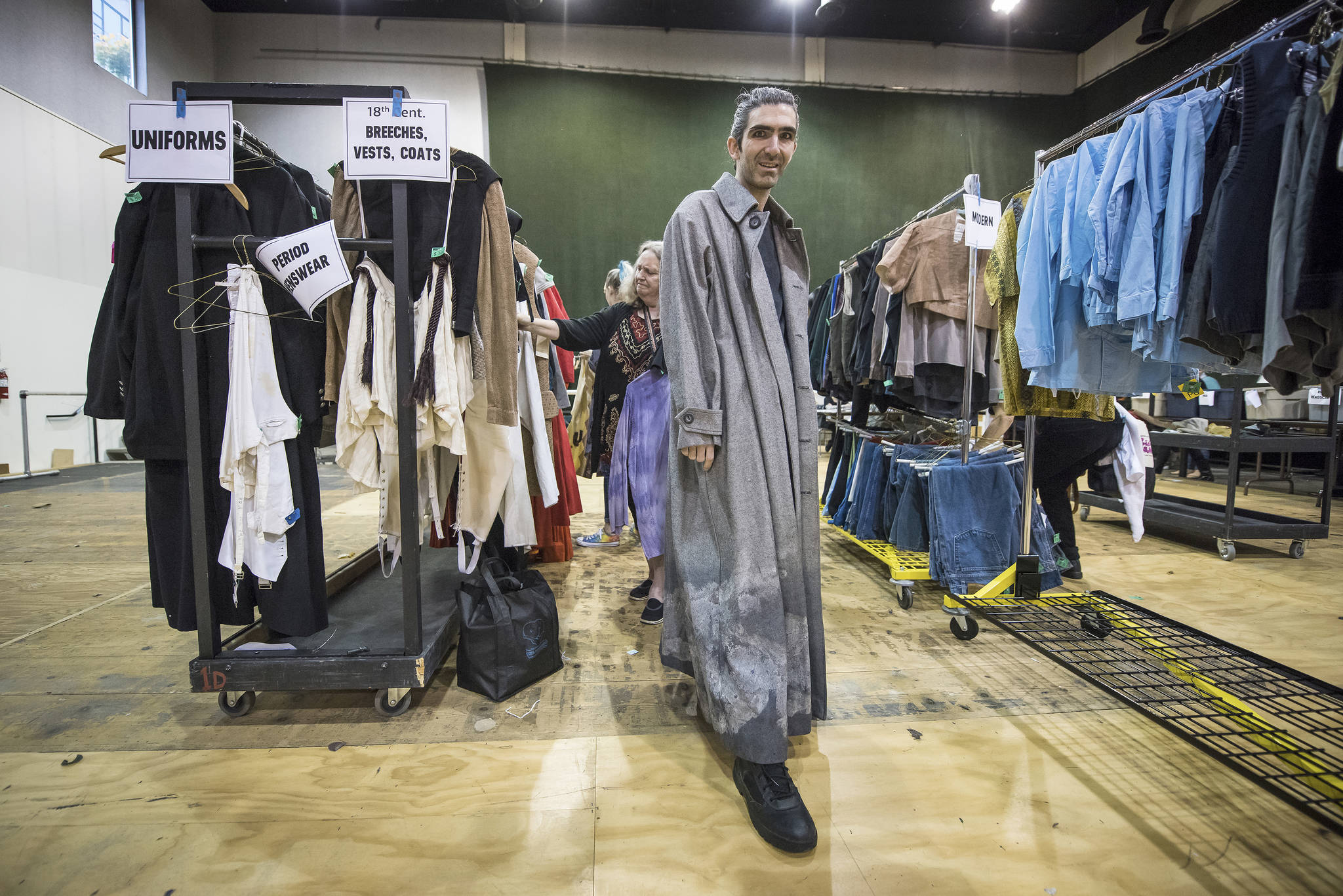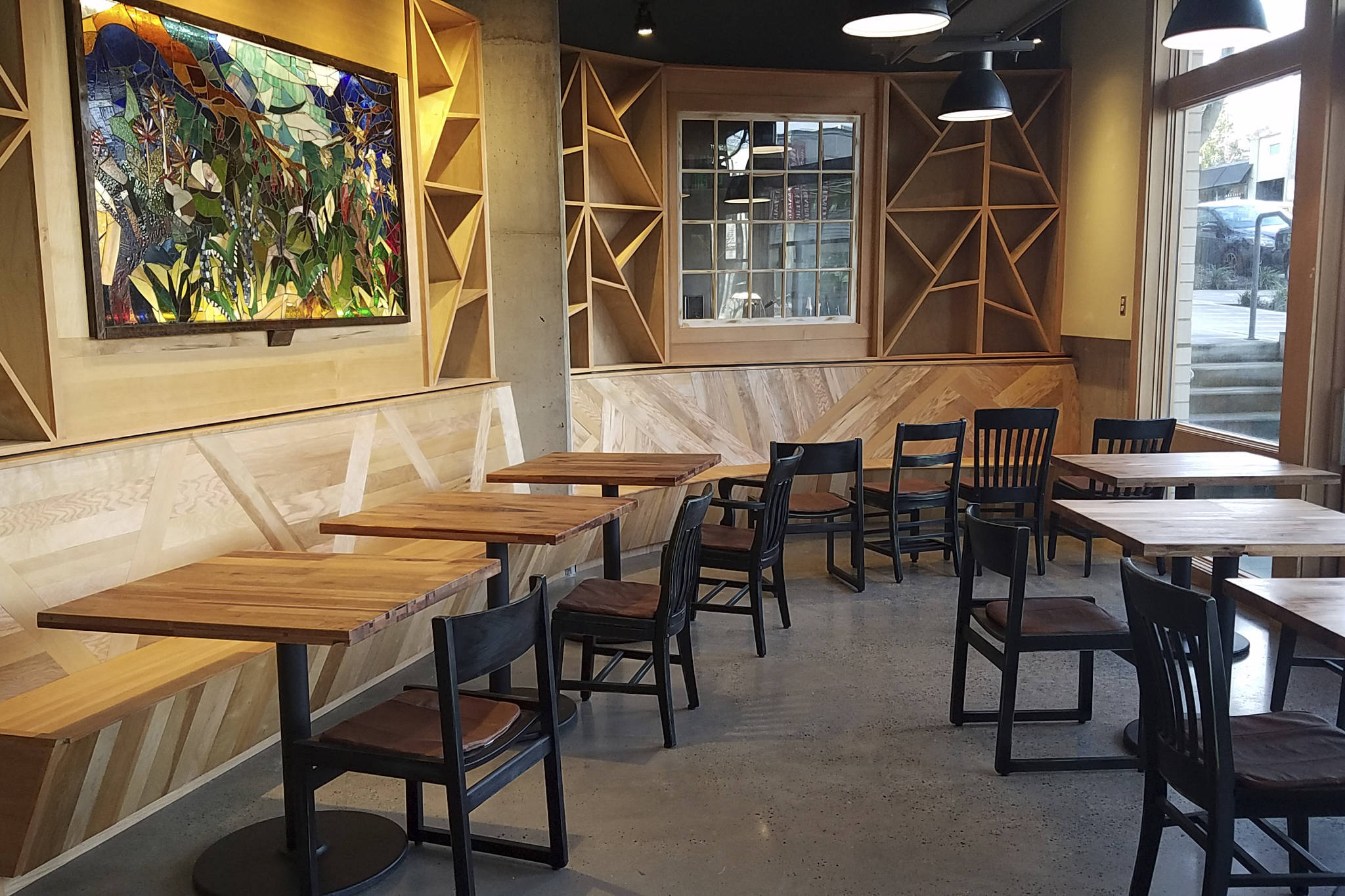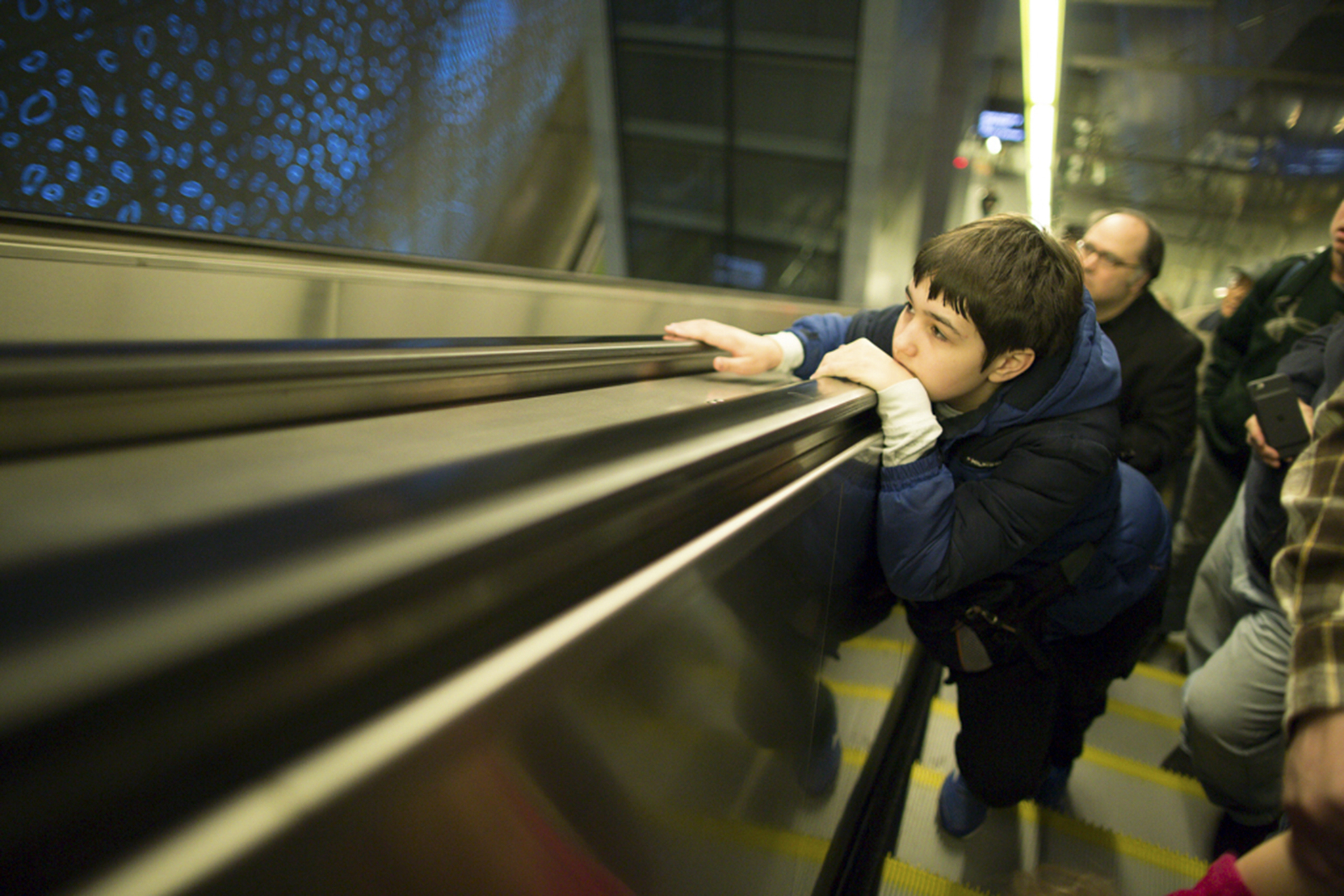“I got here before eight and there was already a line outside.” Susan Davis spoke as she was standing at the entrance to the Seattle Opera warehouse on Terry Avenue in South Lake Union on Saturday afternoon. Wearing a black baseball cap that had “BOSS” written on the front in silver sequins, the manager of the company’s costume shop was handing out flyers to the hundreds who filtered through the doorway as the afternoon wore on. Inside were rows upon rows of costumes for sale, remnants of the Opera’s recent past, as well as that of 5th Avenue Theatre.
The flyer stated that food and drink was banned from the premises, explained all sales were final, and reminded patrons that they would be required to try on pieces over their clothes, since there weren’t dressing rooms. On the other side of Davis, a handful of shoppers were flipping through racks of long capes, ostentatious gowns, and leopard prints—all priced between $10 and $20. About a dozen amiable volunteers walked throughout the airy space. Quite a few of the people there seemed to know each other. There was a sense of relief in the air: the morning rush had been hectic.
Hundreds of the stage-worn, surplus costumes had been sold, including those from popular productions like Wagner’s Ring Cycle, Aida, and Rent. Customers curious about the history of potential purchases could find the titles neatly written on labels sewn under the neck. That wasn’t necessarily what brought shoppers in.
“Seattle is full of costume people who dress for all kinds of occasions,” Davis said. “They have their eighteenth century balls, or their costume con stuff, and their fantasy whatever. They cosplay—including some of my staff.”
The sale was an anticipated event with some shoppers camping out the night before. The sale was, by Davis’s estimation, one of only four costume sales the Opera has held over the last 15 years.
The theaters only raised a few thousand dollars from the sale, but Davis said that the revenue is not really the point. It’s about giving beautiful objects new life, she said, whether it’s as a Halloween costume or an ensemble for a DIY artist. It is also one way that the large companies can help sustain the grassroots troupes that sprout around them.
Musicians, dancers, actors, and burlesque performers all attended. Many confirmed that that they use the professionally-made costumes to improve the production values of their own performances.
That’s why Douglas McKenny was there. He’s better known as the Marquis Facade, a regular in the burlesque circuit. He performs at the Conservatory in Georgetown every third Friday in Tricked, a “mostly male” burlesque show.
“Opera has great style—heightened style,” he explained as he inspected a greatcoat that would have looked appropriate on a Prussian cavalry officer. “It’s a way to inject something interesting and original into my wardrobe.”
The wardrobe is just a small part of the Marquis’s performance; most of the costume winds up on the floor early in the act. The Marquis has recently gone onstage and revealed a diagram drawn on his chest that shows different cuts of meat. He then pretends to cut out a part of his chest with a cleaver and serves up raw steaks to the crowd.
Other artists’ tastes were less macabre.
“I came down for corsets, but I found this cool dress,” said a grinning Megan Vermillion while holding up a purple ball gown. “I think I might wear it for the Halloween gigs my bands have this weekend.”
Vermillion was already wearing something original: a purple dinosaur costume with a tail. She plays tenor sax in the 8-Bit Brass Band, which plays all-brass arrangements of video game songs, and the Chaotic Noise Marching Corps, which is a staple of HONK! Fest West, an annual gathering of alt marching and brass bands. Vermillion was looking for something black and witchy for 8-Bit’s gig at Nectar on Halloween.
“The 8-Bit Brass Band is a cosplay band, so everyone wears costumes when we go out. We play stuff from Legend of Zelda, Bill Nye the Science Guy,” she says. “We have a full Star Wars set for the movie coming out in December.”
Vermillion was particularly excited to play the Mos Eisley cantina theme.
“We played Geek Girl Con most recently. They loved it,” she says in reference to the song, which is heavy on alien saxophone and clarinet. “I dressed as Pikachu then.”
Vermillion was one of several shoppers steeped in geek culture, bringing together the high art of the Opera and the tech neighborhood that continues to rise around it.
“I got one of the human dresses from the Ring Cycle said Quinn Alexa Dailey, a film major at Shoreline Community College, “and I got the last complete Valkyrie.”
Dailey would now be able to cosplay both the Norse war goddesses that Wagner incorporated in his epic, four-part Der Ring des Nibelungen and whoever it is that wears a “human dress.” But while Dailey’s costumes were being retired from the theatrical stage, many were on their way to a second act.
“I mostly do theater-style LARPing,” said one shopper named Vic, using the acronym for “live action role-playing.” “Not the kind with foam swords in the woods. A couple of weeks ago I ran a LARP called ‘Garden of Forking Paths.’ That’s a story about a family, and it’s played out with three simultaneous sets of people playing the same characters.”
With the right score, it could be an opera. For now, Vic will have to settle for the costumes.
“We want to give costumes another life onstage,” Davis said. “We love when things will be on stage again. We can’t use them. They’re just sitting in our closet.”
“We have to choose what to not keep, even if we love it.”












